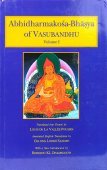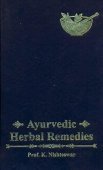Osha, Oṣā, Oṣa: 15 definitions
Introduction:
Osha means something in Hinduism, Sanskrit, Marathi, Hindi, biology. If you want to know the exact meaning, history, etymology or English translation of this term then check out the descriptions on this page. Add your comment or reference to a book if you want to contribute to this summary article.
The Sanskrit terms Oṣā and Oṣa can be transliterated into English as Osa or Osha, using the IAST transliteration scheme (?).
Alternative spellings of this word include Os.
In Hinduism
Purana and Itihasa (epic history)
Source: Cologne Digital Sanskrit Dictionaries: The Purana IndexOṣā (ओषा).—The wife of Bhava; son was Uśanas.*
- * Vāyu-purāṇa 27. 50.
Au

The Purana (पुराण, purāṇas) refers to Sanskrit literature preserving ancient India’s vast cultural history, including historical legends, religious ceremonies, various arts and sciences. The eighteen mahapuranas total over 400,000 shlokas (metrical couplets) and date to at least several centuries BCE.
Ayurveda (science of life)
Source: gurumukhi.ru: Ayurveda glossary of termsOṣa (ओष):—Burning sensation with sweating and restlessness. Localized burning sensation.

Āyurveda (आयुर्वेद, ayurveda) is a branch of Indian science dealing with medicine, herbalism, taxology, anatomy, surgery, alchemy and related topics. Traditional practice of Āyurveda in ancient India dates back to at least the first millenium BC. Literature is commonly written in Sanskrit using various poetic metres.
Biology (plants and animals)
Source: Google Books: CRC World Dictionary (Regional names)Osha in India is the name of a plant defined with Sterculia villosa in various botanical sources. This page contains potential references in Ayurveda, modern medicine, and other folk traditions or local practices It has the synonym Sterculia villosa Roxb. ex DC. (among others).
Example references for further research on medicinal uses or toxicity (see latin names for full list):
· Sterculia (1816)
· Cycl. (Rees)
· Hort. Suburb. Calcutt. (1845)
· Flora of the British India (1874)
· Bulletin of the Fan Memorial Institute of Biology (1937)
· Hortus Bengalensis, or ‘a Catalogue of the Plants Growing in the Hounourable East India Company's Botanical Garden at Calcutta’ (1814)
If you are looking for specific details regarding Osha, for example health benefits, side effects, pregnancy safety, chemical composition, extract dosage, diet and recipes, have a look at these references.

This sections includes definitions from the five kingdoms of living things: Animals, Plants, Fungi, Protists and Monera. It will include both the official binomial nomenclature (scientific names usually in Latin) as well as regional spellings and variants.
Languages of India and abroad
Marathi-English dictionary
Source: DDSA: The Molesworth Marathi and English Dictionaryōsa (ओस).—a Desolate, depopulated, forsaken--a town or village: lying uncultivated--land.
--- OR ---
ōsa (ओस).—f C Shakings or minute bits of ricestraw. 2 The integuments (of the Cocoanut, Plantainstems &c.) torn or stripped off. 3 W The fleshy root of the cartilaginous septum of the nose.
--- OR ---
ōsa (ओस).—n ōsaṅga m P Tree-shade; the darkness of a thicket or under a tree. Viewed as injurious to vegetation.
--- OR ---
ōsā (ओसा).—m C A blank spot in a field of corn, a bare patch.
Source: DDSA: The Aryabhusan school dictionary, Marathi-Englishōsa (ओस).—a Desolate, forsaken, depopulat- ed-a town; lying uncultivated-land.
Marathi is an Indo-European language having over 70 million native speakers people in (predominantly) Maharashtra India. Marathi, like many other Indo-Aryan languages, evolved from early forms of Prakrit, which itself is a subset of Sanskrit, one of the most ancient languages of the world.
Sanskrit dictionary
Source: DDSA: The practical Sanskrit-English dictionaryOṣa (ओष).—
1) Burning, combustion; ओषमित् पृथिवीमहम् (oṣamit pṛthivīmaham) Ṛgveda 1.119.1.
2) Cooking, baking.
Derivable forms: oṣaḥ (ओषः).
Source: Cologne Digital Sanskrit Dictionaries: Edgerton Buddhist Hybrid Sanskrit DictionaryOsa (ओस) or Avaśya.—(m. or nt.; = AMg. osa; Sanskrit avaśyāya, once Lex. avaśyā, f.), hoarfrost, as symbol of transitoriness, used of life or worldly things: Lalitavistara 214.8 (verse) osavindūpamā …śūnyasvabhāvā(ḥ), like drops of hoarfrost (fleeting and vain); Samādhirājasūtra 22.6 jīviti svapnanibhe cali 'vaśye (Réga- mey's note states that Tibetan renders hoarfrost, which he unwisely abandons); Śikṣāsamuccaya 18.12 (verse, cited from Candra- pradīpa Sūtra = Samādhirājasūtra, but not the same verse) jīvite cañcale 'vaśye māyāsvapnanibhopame. In the Lalitavistara osa could be m.c. for osā = Sanskrit (Lex.) avaśyā; but the loc. (a)vaśye in the others points to a m. or nt. stem; AMg. osa is given by [Ardha-Māgadhī Dictionary] as m.
--- OR ---
Osa (ओस).—see avaśya.
Source: Cologne Digital Sanskrit Dictionaries: Shabda-Sagara Sanskrit-English DictionaryOṣa (ओष).—m.
(-ṣaḥ) Burning, combustion. E. uṣ to burn, ghañ aff.
Source: Cologne Digital Sanskrit Dictionaries: Cappeller Sanskrit-English DictionaryOṣa (ओष).—[masculine] burning, combustion.
Source: Cologne Digital Sanskrit Dictionaries: Monier-Williams Sanskrit-English Dictionary1) Oṣa (ओष):—m. (√uṣ), burning, combustion, [Suśruta]
2) mfn. burning, shining, [Ṛg-veda x, 119, 10]
Source: Cologne Digital Sanskrit Dictionaries: Yates Sanskrit-English DictionaryOṣa (ओष):—(ṣaḥ) 1. m. Burning, combustion.
[Sanskrit to German]
Sanskrit, also spelled संस्कृतम् (saṃskṛtam), is an ancient language of India commonly seen as the grandmother of the Indo-European language family (even English!). Closely allied with Prakrit and Pali, Sanskrit is more exhaustive in both grammar and terms and has the most extensive collection of literature in the world, greatly surpassing its sister-languages Greek and Latin.
Hindi dictionary
Source: DDSA: A practical Hindi-English dictionaryOsa (ओस) [Also spelled os]:—(nf) dew; —[kā motī] lit. a pearl of dew, i. e. something very shortlived; —[cāṭane se pyāsa] [nahīṃ bujhatī] dew drops can scarcely quench one’s thirst; —[paḍanā] to lose luster/brilliance.
...
Kannada-English dictionary
Source: Alar: Kannada-English corpusOśa (ಒಶ):—[noun] the condition of being directed restrained or controlled; control.
--- OR ---
Ōṣa (ಓಷ):—
1) [noun] the act or process of burning; combustion.
2) [noun] (med.) the aggregate of three spices black pepper, long pepper and dry ginger, used as a medicinal substance.
Kannada is a Dravidian language (as opposed to the Indo-European language family) mainly spoken in the southwestern region of India.
See also (Relevant definitions)
Starts with (+29): Osadha, Osana, Osarati, Osata, Oshadashva, Oshadavan, Oshadhayas, Oshadhi, Oshadhidhara, Oshadhigarbha, Oshadhihoma, Oshadhija, Oshadhikalpa, Oshadhiloka, Oshadhimadya, Oshadhimant, Oshadhimat, Oshadhinamamala, Oshadhinamavali, Oshadhinatha.
Ends with (+797): Abharanachattranirghosha, Abharanachhattranirghosha, Abhayaghosha, Abhidhanakosha, Abhidharmakosha, Abhighosha, Abhikrosha, Abhinirghosha, Abhutadosha, Abhyosha, Acaryakosha, Adhikosha, Adosha, Advaitaratnakosha, Agastiko-kosha, Aghosha, Ahikosha, Ajosha, Akasmika-kosha, Akosa.
Full-text (+23): Osham, Oshadhi, Duroshas, Avashya, Oshas, Oshishtha, Oshadhitvara, Oshadhiprastha, Oshadhiloka, Oshadavan, Osika, Oshadhivanaspati, Karanataka, Oshadhija, Oshadhinamavali, Oshadhyanuvaka, Durosha, Oshadhipati, Oshishthahan, Oshadhivallabha.
Relevant text
Search found 8 books and stories containing Osha, Oṣā, Osa, Ōsa, Ōsā, Osā, Oṣa, Ośa, Ōṣa; (plurals include: Oshas, Oṣās, Osas, Ōsas, Ōsās, Osās, Oṣas, Ośas, Ōṣas). You can also click to the full overview containing English textual excerpts. Below are direct links for the most relevant articles:
Rig Veda (translation and commentary) (by H. H. Wilson)
Taittiriya Upanishad Bhashya Vartika (by R. Balasubramanian)
Verse 2.259 < [Book 2 - Brahmavallī]
Women in the Atharva-veda Samhita (by Pranab Jyoti Kalita)
16. Goddess Oṣadhayaḥ (Oṣadhayas) < [Chapter 4 - Female Deities and the Glorification of Women in the Atharvaveda]
Satapatha-brahmana (by Julius Eggeling)
Kāṇḍa II, adhyāya 2, brāhmaṇa 4 < [Second Kāṇḍa]
The African Scene and Wole Scyinka’s Fiction < [Jan. – Mar. 1991 & Apr. – Jun. 1991]
Sushruta Samhita, Volume 6: Uttara-tantra (by Kaviraj Kunja Lal Bhishagratna)
Chapter XXXVIII - Treatment of the diseases of the female organ of generation < [Canto II - Kaumarabhritya-tantra (pediatrics, gynecology and pregnancy)]
Chapter XLI - Symptoms and Treatment of Phthisis (Shosha) < [Canto III - Kaya-chikitsa-tantra (internal medicine)]
Related products

